Space Weather Glossary
There is a lot of specialized language used in the field of space weather. Here are definitions of some terms you may not be familiar with:
 Space Weather
Space Weather
You might also be interested in:
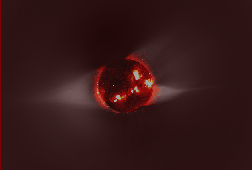
Rising above the Sun's chromosphere , the temperature jumps sharply from a few tens of thousands of kelvins to as much as a few million kelvins in the Sun's outer atmosphere, the solar corona. Understanding
...more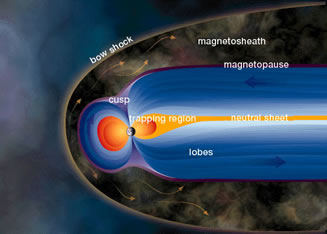
A magnetosphere has many parts, such as the bow shock, magnetosheath, magnetotail, plasmasheet, lobes, plasmasphere, radiation belts and many electric currents. It is composed of charged particles and
...more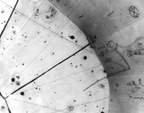
The neutrino is an extremely light (and possibly massless) neutral particle. The neutrino belongs to the family of leptons, the particles that interact through the so-called weak force. For this reason
...more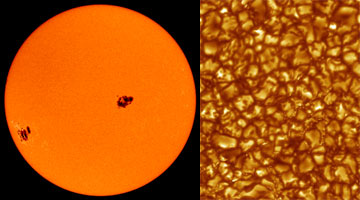
Most of the energy we receive from the Sun is the visible (white) light emitted from the photosphere. The photosphere is one of the coolest regions of the Sun (6000 K), so only a small fraction (0.1%)
...more
Plasma is known as the fourth state of matter (the first three states being solid, liquid and gas).Matter in ordinary conditions on Earth has electrons that orbit around the atomic nucleus. The electrons
...more
The plasmasphere is a torus-shaped region within the Earth's magnetosphere. The Earth's plasmasphere is made of just that - plasma. It has a very sharp edge called the plasmapause at equatorial distances
...more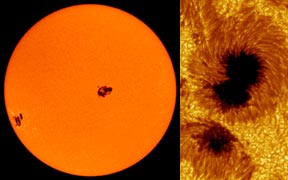
Sunspots are dark, planet-sized regions that appear on the "surface" of the Sun. Sunspots are "dark" because they are cooler than their surroundings. A large sunspot might have a central temperature of
...more














